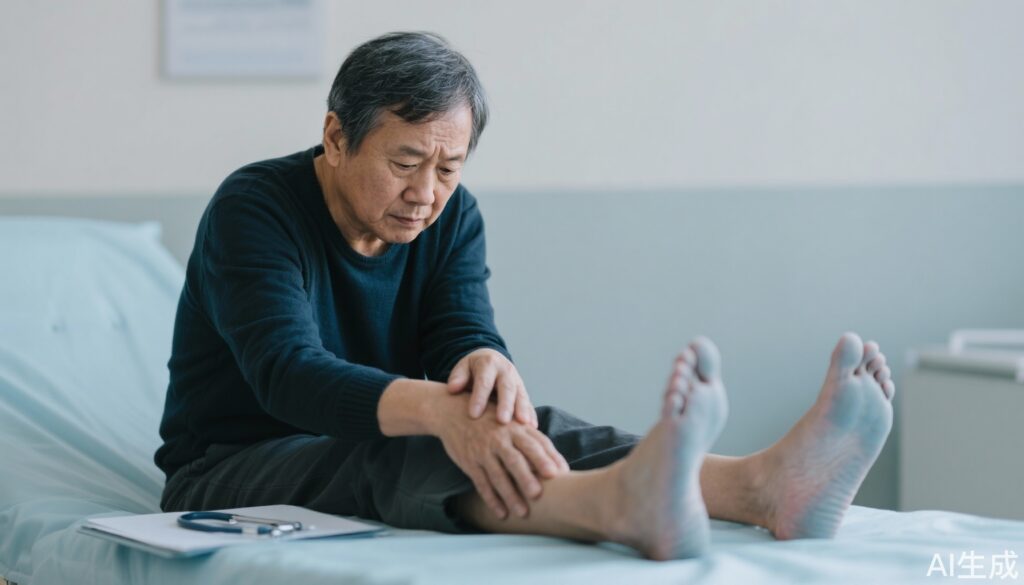Introduction
The health of our blood vessels, especially those supplying the extremities—our hands and feet—is vital for overall well-being. Vascular blockage, often due to narrowing or obstruction of arteries, can lead to serious complications including pain, ulceration, and in severe cases, amputation. Early detection is critical yet challenging, as symptoms often begin subtly and can be overlooked. This article aims to shed light on the key early warning signs related to vascular obstruction in extremities, the clinical science underpinning these symptoms, practical self-assessment techniques, and expert recommendations for timely intervention.
Understanding Vascular Blockage and Its Clinical Context
Vascular blockage typically arises from atherosclerosis (hardening and narrowing of arteries due to plaque build-up), thrombosis, or peripheral artery disease (PAD). These conditions reduce blood flow, depriving tissues of oxygen and nutrients. Globally, PAD affects over 200 million people and significantly increases the risk of heart attack, stroke, and limb loss. Early identification can prevent deterioration and improve quality of life.
The hands and feet are the furthest points from the heart, making them particularly vulnerable to poor circulation. As “sentinels” of vascular health, these extremities often manifest subtle changes signaling systemic vascular problems.
Early Warning Signs: What Your Hands and Feet Are Telling You
1. Cold, Numb Hands and Feet That Don’t Warm Even After Long Exposure
Persistent coldness and numbness in the hands or feet, despite ambient warmth, suggest impaired peripheral blood flow. This may be due to narrowed or blocked peripheral arteries.
Medical science explains that restricted blood supply reduces heat delivery and sensory function, causing sensations akin to pins and needles (paresthesia). Traditional Chinese Medicine (TCM) describes this in terms of “blood stasis” and insufficient “yang” energy, which hinders blood circulation and causes “blood to congeal in the cold.”
Clinically, accompanying signs like pale or bluish skin warrant urgent attention to rule out arterial hardening or thrombosis.
2. Intermittent Claudication (Painful Cramping in the Legs During Walking)
This symptom is characterized by muscle pain, cramping, or fatigue in the calves during walking or exercise, which is relieved by rest. It occurs because muscles demand more oxygen on exertion, but narrowed arteries fail to meet this demand.
From a Western medical perspective, it is a hallmark of PAD. In TCM, it is related to “blood stasis” and disrupted energy (Qi) flow in the meridians.
3. Skin Changes on Hands and Feet
Vascular impediments also affect the nutritional supply to the skin. Signs include localized purplish discoloration, dry skin, peeling, and non-healing ulcers.
Such manifestations raise special concern for diabetic individuals, where these changes may herald diabetic foot, a serious complication risking infection and amputation.
TCM attributes these to “Qi deficiency and blood stasis,” meaning inadequate supply of vital energy and blood to nourish the skin.
4. Easy Bruising from Minor Trauma
Unusual bruising with minimal impact and prolonged fading times may indicate increased vascular fragility or thickened blood.
In TCM, the spleen governs blood containment within vessels, and its deficiency leads to blood leakage out of vessels.
Simple Self-Testing Methods to Assess Vascular Health
Identifying possible vascular issues early can be aided by simple tests performed at home:
1. Leg Elevation Test
Lie down and lift both legs about 45 degrees, maintaining this for 1-2 minutes. Watch for color changes:
– Rapid whitening and cooling of the legs suggest circulatory problems.
– Upon lowering the legs, a purple-red color returning slowly is also indicative of impaired blood flow.
2. Capillary Refill Time Test
Press down on a fingernail or toenail bed until it turns white, then release and time how long it takes for color to return.
– Normal refill time is less than 3 seconds.
– If the refill exceeds 5 seconds, it suggests poor peripheral circulation.
Expert Recommendations and Insights
Dr. Emily Carter, a vascular specialist, emphasizes, “Early recognition and timely intervention can prevent progression to critical limb ischemia. Patients should not dismiss persistent coldness, numbness, or unusual skin changes.”
Integrative approaches combining Western medicine with traditional therapies—such as promoting blood flow and strengthening overall vitality—may offer comprehensive benefits.
Patient Scenario: John’s Story
John, a 67-year-old retired teacher, had long noticed his feet felt cold and numb even in warm weather. He occasionally experienced calf pain when walking short distances but dismissed it as arthritis. After performing the leg elevation test at home and noting his feet turned pale with slow color return, he consulted a vascular specialist. An angiogram revealed significant narrowing of his lower limb arteries. With targeted treatment and lifestyle changes, John’s symptoms improved significantly, highlighting the importance of awareness and early action.
Conclusion
The hands and feet offer vital clues to underlying vascular health problems. Recognizing the early signs—persistent coldness and numbness, intermittent claudication, skin changes, and easy bruising—combined with simple self-assessment tools can lead to timely diagnosis and treatment. Greater public awareness and professional vigilance are necessary to reduce the burden of vascular diseases.
References
1. Norgren L, Hiatt WR, Dormandy JA, et al. Inter-Society Consensus for the Management of Peripheral Arterial Disease (TASC II). J Vasc Surg. 2007;45 Suppl S:S5-S67.
2. Criqui MH, Aboyans V. Epidemiology of peripheral artery disease. Circ Res. 2015;116(9):1509-1526.
3. Hirsch AT, Haskal ZJ, Hertzer NR, et al. ACC/AHA guidelines for the management of patients with peripheral arterial disease. Circulation. 2006;113(11):e463-e654.
4. American Diabetes Association. Standards of Medical Care in Diabetes—2021.
5. Tian JH, Zhang BM. Traditional Chinese medicine and PAD: blood stasis and Qi deficiency perspectives. Chin J Integr Med. 2013;19(2):143-147.



